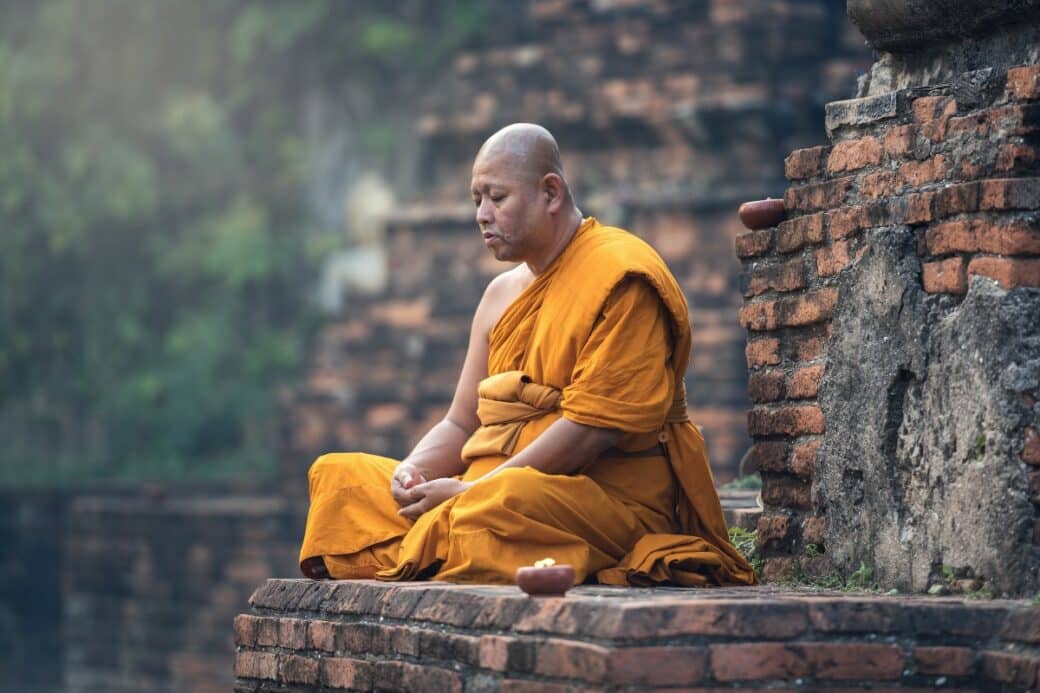Imagine being able to tap into the natural flow of life energy within you, effortlessly balancing your mind, body, and spirit. Qigong Meditation offers a transformative practice that allows you to do just that. By harnessing the power of breath, movement, and focused intention, this ancient practice can help you cultivate vitality, reduce stress, and enhance your overall well-being. In this article, we will explore the essence of Qigong Meditation, its benefits, and how you can incorporate it into your daily life. Get ready to unlock the harmonious flow of energy and experience a renewed sense of balance.
Understanding the Origins of Qigong Meditation
Qigong meditation is an ancient Chinese practice that has been passed down through generations. It is a holistic approach to health and well-being that integrates the mind, body, and spirit. The origins of Qigong can be traced back thousands of years, with references to it found in ancient Chinese texts and manuscripts.
Ancient Chinese practice
Qigong meditation has its roots in ancient Chinese philosophy and culture. It was developed and refined over centuries by Taoist and Buddhist practitioners as a means to cultivate life energy, known as Qi, and achieve harmony and balance within the body and mind. This ancient practice has been preserved and passed down through the generations, making it an integral part of Chinese culture and traditions.
Integration of mind, body, and spirit
What sets Qigong meditation apart from other forms of meditation is its emphasis on the integration of mind, body, and spirit. In Qigong, the mind is used to direct and guide the flow of Qi, while the body is engaged in gentle movements and postures to facilitate the circulation of energy. The spirit, or the inner essence of a person, is nourished and expanded through the practice of Qigong meditation.
The role of Qigong in Chinese medicine
Qigong meditation is deeply rooted in Chinese medicine. In traditional Chinese medicine, it is believed that health issues arise from imbalances or blockages in the flow of Qi. Qigong is used as a means to correct and restore balance in the body’s energy system. It is often prescribed as a complementary therapy alongside other treatments, such as acupuncture and herbal medicine. Qigong can help promote overall health, relieve pain, reduce stress, and strengthen the immune system.
The Philosophy Behind Qigong Meditation
To truly understand Qigong meditation, it is important to grasp the underlying philosophy that guides its practice. Qigong is based on several key principles and concepts that are fundamental to its philosophy.
Yin Yang theory
Yin Yang theory is at the core of Qigong meditation. It is a concept that represents the dynamic and complementary nature of all aspects of existence. Yin and Yang are opposite forces that are interconnected and interdependent. In Qigong, the aim is to achieve a state of balance and harmony between these opposing forces within the body and mind.
Balancing the Five Elements
Another important element in Qigong meditation is the concept of the Five Elements, also known as the Five Phases or Five Movements. These elements are Wood, Fire, Earth, Metal, and Water, and they represent different qualities and energies present in nature and the human body. Balancing these elements through Qigong practice is believed to promote health, vitality, and well-being.
The concept of Qi or life energy
At the heart of Qigong meditation is the concept of Qi, which can be translated as life energy or vital force. Qi is believed to flow through the body’s energy channels, known as meridians, and nourish all aspects of our being. Through the practice of Qigong, one can cultivate, circulate, and harmonize Qi, thereby promoting physical, mental, and spiritual health.

Key Principles of Qigong Meditation
To practice Qigong meditation effectively, it is essential to understand and apply the key principles that guide its practice.
Concentration
Concentration is a crucial aspect of Qigong meditation. It involves focusing the mind on specific movements, breath, or visualizations to cultivate a deep state of inward awareness. By concentrating the mind, one can direct and guide the flow of Qi, enhancing the effects of the practice.
Relaxation
Relaxation is another important principle in Qigong meditation. By consciously releasing tension and allowing the body and mind to relax, the flow of Qi can be enhanced. Relaxation also helps to quiet the mind, allowing for a state of inner calm and tranquility.
Alignment of body, breath, and mind
Aligning the body, breath, and mind is a fundamental principle in Qigong meditation. By coordinating these three aspects, one can create a unified and harmonious state of being. Proper alignment ensures the smooth flow of Qi, deepens relaxation, and enhances the overall effectiveness of the practice.
Flow
Flow refers to the continuous and smooth movement of energy within the body during Qigong meditation. It involves cultivating a state of mindfulness and allowing the Qi to naturally circulate and flow through the meridians. Flowing with the Qi promotes relaxation, balance, and increased vitality.
Qigong Versus Other Meditation Practices
While Qigong meditation shares similarities with other forms of meditation, it also has distinct characteristics that set it apart.
Comparison with Yoga
Yoga and Qigong meditation both emphasize the integration of mind, body, and breath. However, Yoga focuses more on physical postures (asanas) and breath control (pranayama), while Qigong incorporates gentle movements and visualizations to cultivate and circulate Qi. Qigong is also rooted in Chinese philosophy and culture, while Yoga originated in ancient India.
Comparison with Mindfulness Meditation
Mindfulness meditation and Qigong both promote present-moment awareness and deep relaxation. However, mindfulness meditation emphasizes the observation of thoughts and feelings without judgment, while Qigong focuses on the cultivation and circulation of Qi. Qigong also incorporates physical movements, which sets it apart from the more stationary practice of mindfulness meditation.
Similarities and Differences with Tai Chi
Tai Chi and Qigong have a close relationship, with many Qigong exercises forming the foundation of Tai Chi practice. Both emphasize relaxation, deep breathing, and the cultivation of energy. However, Tai Chi is a martial art that includes a sequence of slow and flowing movements, while Qigong meditation encompasses a broader range of exercises and movements.
Basic Qigong Meditation Techniques
Qigong meditation encompasses a variety of techniques that can be practiced individually or in combination. These techniques include:
Breathing techniques
Breathwork is a fundamental aspect of Qigong meditation. Specific breathing techniques are used to enhance the flow of Qi and promote relaxation. Techniques such as abdominal breathing, reverse breathing, and natural breathing are commonly employed in Qigong practice.
Postures and Movements
Qigong incorporates a range of gentle movements and postures that are designed to facilitate the circulation of Qi and open the energy channels. These movements can be slow and flowing or stationary and held for a period of time. Examples of Qigong postures include the Crane, the Tree, and the Standing Pole.
Mental exercises
In addition to physical movements, Qigong meditation also involves mental exercises. Visualization techniques are used to guide the flow of Qi and cultivate specific qualities or energies within the body. Mental focus and intention are essential in directing and harnessing the power of Qi.
Exploring Different Styles of Qigong
There are various styles and forms of Qigong, each with its unique characteristics and purposes. Some of the common styles include:
Medical Qigong
Medical Qigong is a specialized form of Qigong that focuses on promoting health and healing. It involves specific exercises and techniques that target different organs and systems of the body. Medical Qigong is often used as a complementary therapy in combination with other medical treatments.
Martial Qigong
Martial Qigong combines Qigong practice with martial arts movements and principles. It is aimed at developing and harnessing internal energy for self-defense purposes. Martial Qigong emphasizes strength, agility, and the cultivation of Qi for martial arts applications.
Spiritual Qigong
Spiritual Qigong is a form of Qigong practice that focuses on spiritual development and enlightenment. It involves deepening one’s connection to the self, nature, and the universe. Spiritual Qigong often incorporates meditation, visualizations, and energy cultivation techniques to promote spiritual growth.
Benefits of Practicing Qigong Meditation
The practice of Qigong meditation offers a wide range of benefits for the physical, mental, emotional, and spiritual aspects of a person’s well-being.
Physical benefits
Regular practice of Qigong meditation can improve physical health and vitality. It helps strengthen the immune system, improve circulation, and enhance flexibility and balance. Qigong can also relieve chronic pain, reduce inflammation, and promote better sleep.
Mental and Emotional benefits
Qigong meditation has a calming and centering effect on the mind, reducing stress, anxiety, and depression. It promotes mental clarity, focus, and emotional stability. The practice of Qigong can also enhance mood, increase self-awareness, and cultivate a positive outlook on life.
Spiritual benefits
Qigong meditation provides a pathway to spiritual growth and self-discovery. It deepens one’s connection to the self, others, and the natural world. Through the cultivation and circulation of Qi, spiritual Qigong can lead to a sense of inner peace, harmony, and a greater understanding of the interconnectedness of all things.
Scientific Research on Qigong Meditation
Scientific research has shown that Qigong meditation has positive effects on both the mind and body, validating its effectiveness as a holistic practice.
Effects on stress and the nervous system
Studies have demonstrated that Qigong meditation can activate the parasympathetic nervous system, which is responsible for relaxation and restorative functions. This activation leads to a reduction in stress, improved heart rate variability, and a sense of overall well-being.
Impact on physical health
Research suggests that Qigong meditation can have a positive impact on various physical health conditions. It has been shown to improve cardiovascular health, reduce blood pressure, and alleviate symptoms of chronic conditions such as arthritis, fibromyalgia, and diabetes.
Enhancement of cognitive functions
Studies have also explored the effects of Qigong meditation on cognitive functions. Research has indicated that regular practice of Qigong can improve cognitive performance, including attention, memory, and executive functions. It has also been found to have positive effects on brain structure and neuroplasticity.
How to Incorporate Qigong Meditation into Daily Life
To fully benefit from Qigong meditation, it is essential to incorporate it into your daily life and establish a consistent practice routine.
Creating a practice routine
Designate a specific time and space for your daily Qigong meditation practice. It can be helpful to start with shorter sessions and gradually increase the duration as you become more comfortable. Consistency is key, so try to practice at the same time each day to make it a habit.
Building Qigong into a holistic wellness strategy
Qigong meditation can be integrated into a holistic wellness strategy by combining it with other healthy practices. This can include maintaining a nutritious diet, getting regular exercise, practicing mindfulness, and engaging in activities that promote emotional well-being.
Involving family and friends
Qigong meditation can be a wonderful practice to share with family and friends. Encourage your loved ones to join you in your Qigong sessions, creating a supportive and motivating environment. Practicing together can deepen connections and nurture a sense of community.
Potential Challenges and Solutions in Qigong Practice
As with any new practice, there may be challenges along the way. Here are a few potential challenges that you may encounter in your Qigong practice and some solutions to overcome them.
Dealing with initial discomfort and resistance
Starting a new practice can sometimes feel uncomfortable, especially if it involves unfamiliar movements or mental exercises. To overcome this, approach your Qigong practice with an open mind and patience. Start with simple exercises and gradually progress as you become more comfortable. Remember that discomfort is normal in the beginning, and it will ease with regular practice.
Navigating cultural differences
Qigong has its roots in Chinese culture and may involve concepts or practices that are unfamiliar to you. Take the time to educate yourself about the cultural background of Qigong, and embrace it as an opportunity to learn and explore a different perspective. Respect and honor the traditions and teachings associated with Qigong, and integrate them into your practice with reverence and appreciation.
Adapting Qigong to personal needs and limitations
Each individual is unique, with different physical abilities, health conditions, and needs. It is important to listen to your body and adapt your Qigong practice accordingly. If you have any physical limitations or injuries, consult with a qualified instructor or healthcare professional who can guide you in modifying the exercises to suit your specific needs. Remember, Qigong is a personal journey, and it should be tailored to support your individual well-being.
In conclusion, Qigong meditation is a practice that has stood the test of time and offers numerous benefits for the mind, body, and spirit. By understanding its origins, philosophy, and key principles, you can cultivate a deeper appreciation for this ancient practice. With regular practice and a commitment to incorporating Qigong into your daily life, you can experience the transformative power of Qigong meditation and its positive impact on your overall well-being. So, embrace Qigong meditation as a friendly companion on your journey towards balance, harmony, and self-discovery.




